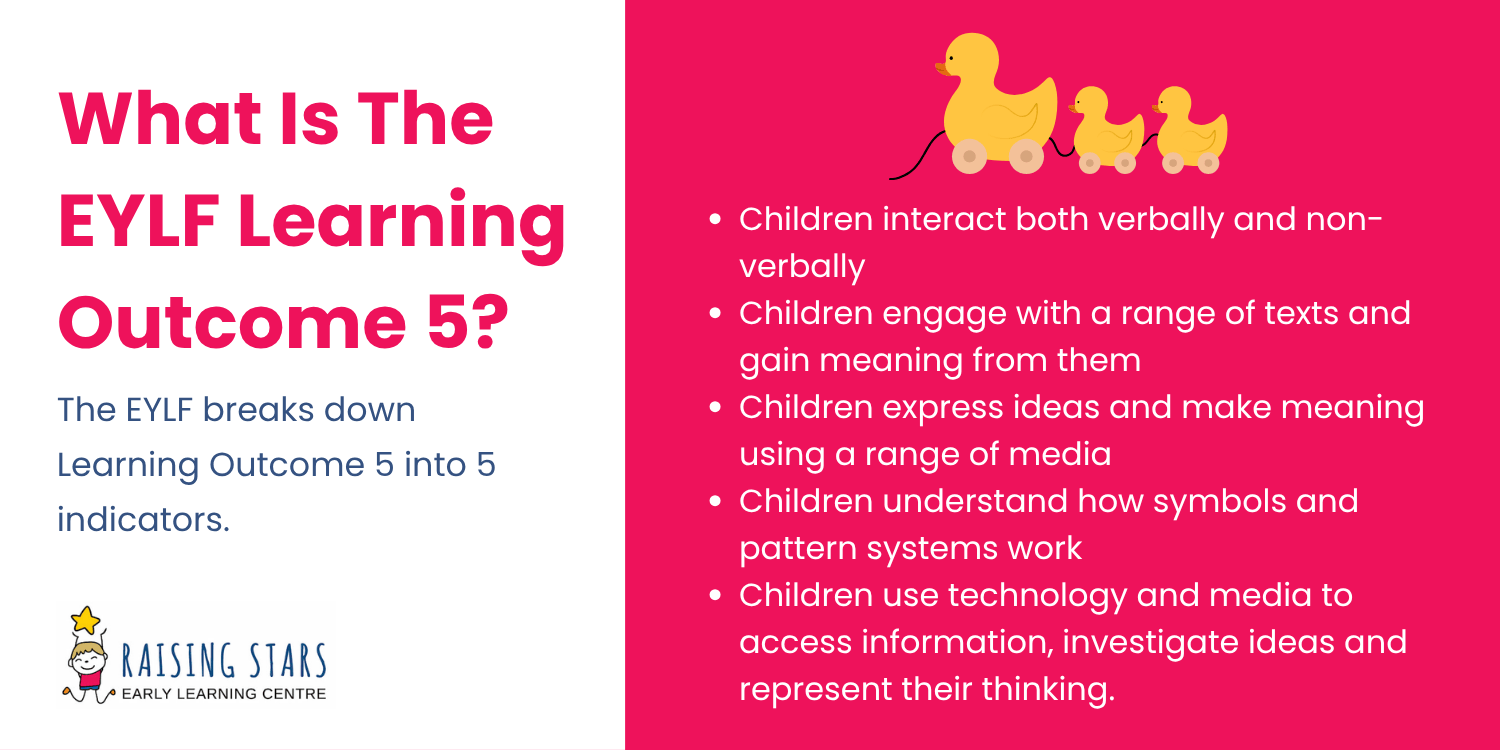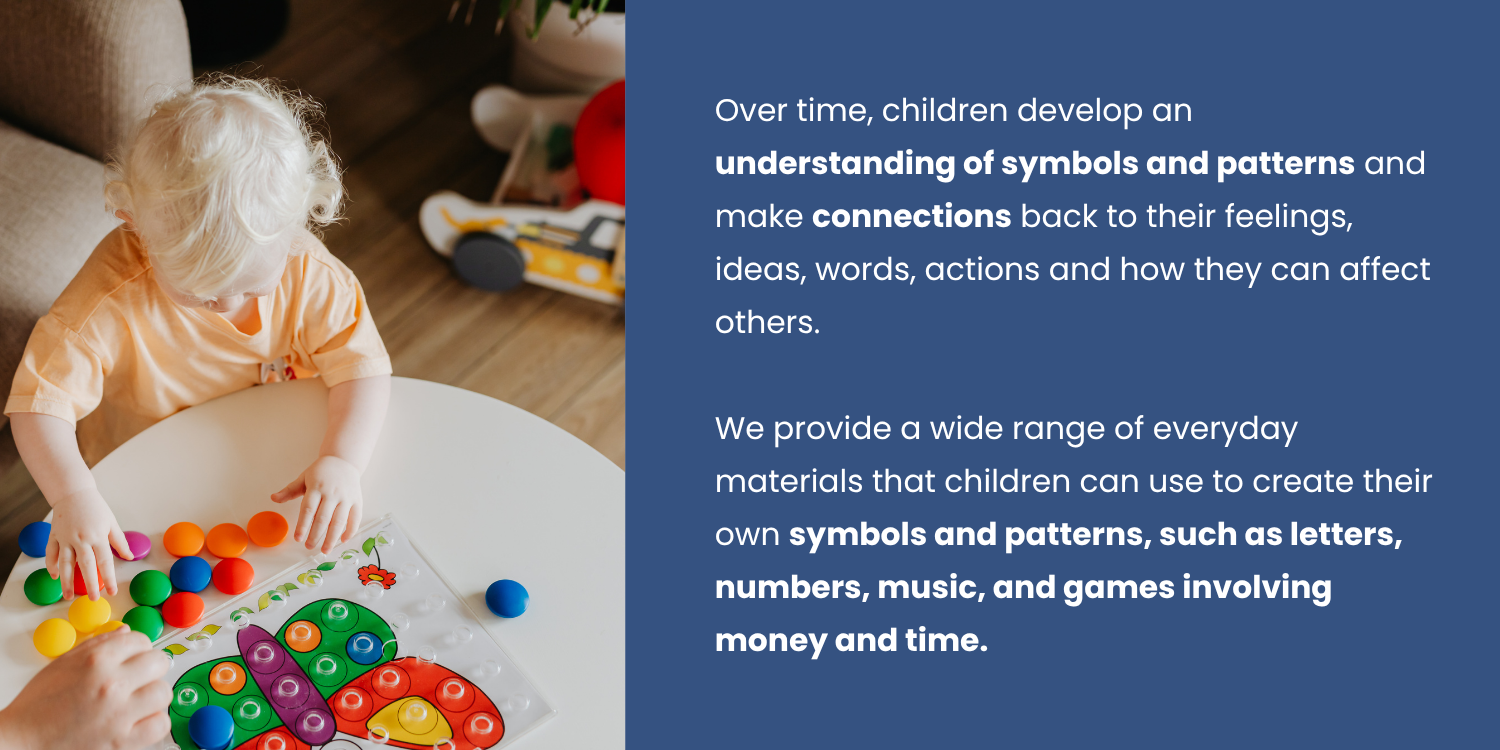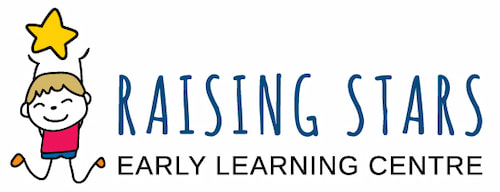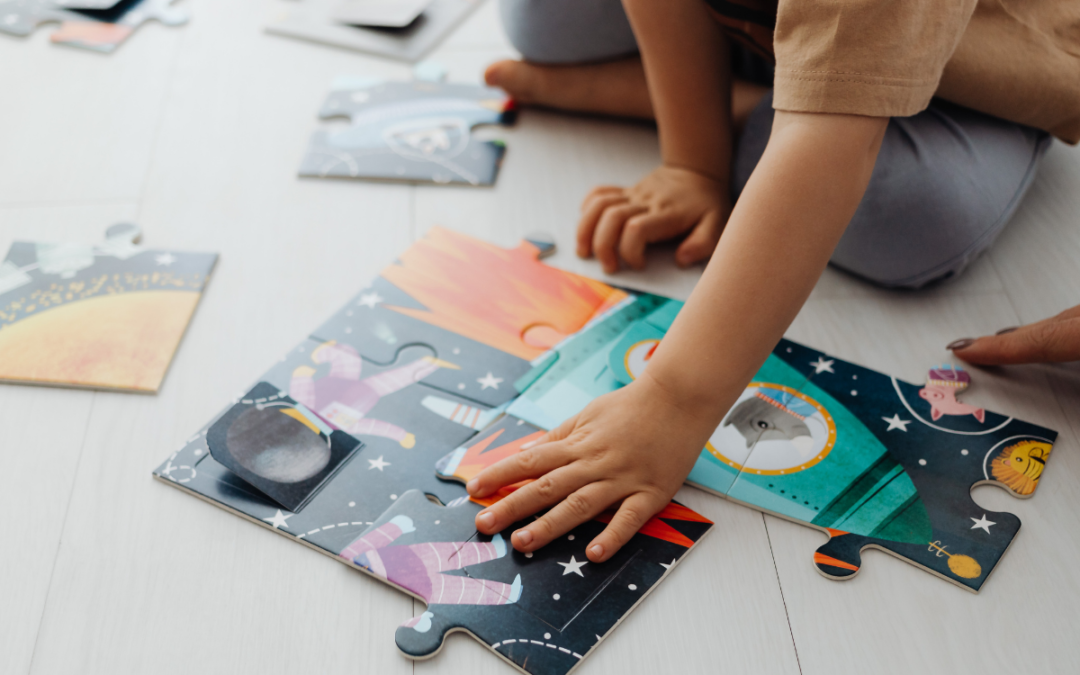Early childhood is a crucial period for development and learning, and can be pivotal in fostering a sense of identity. To ensure that all children receive the best start in life, our educators are guided by the Australian Government’s Early Years Learning Framework (EYLF), which sets out the principles, practices, and outcomes of early childhood learning from birth to the age of 5.
There are five pillars of the Early Years Learning Framework outcomes. The fifth centres around communication and helping children create a strong sense of identity.
What Is The EYLF Learning Outcome 5?
The fifth EYLF Learning Outcome is “Children Are Effective Communicators”, and its main themes are belonging, being, and becoming. Learning Outcome 5 focuses on the way a child interacts and expresses themselves verbally and physically, and how this underpins their sense of identity.
The EYLF breaks down Learning Outcome 5 into five indicators:
- Children interact verbally and non-verbally with others
- Children engage with a range of texts and gain meaning from them
- Children express ideas and make meaning using a range of media
- Children understand how symbols and pattern systems work
- Children use technology and media to access information, investigate ideas and represent their thinking

Children interact verbally and non-verbally with others
When children can confidently interact with others and express themselves verbally and non-verbally, childcare centres create opportunities for them to practice and improve their communication skills, such as asking them to recount what they did over the weekend or playing games like “I Spy With My Little Eye”.
Our childcare educators at Raising Stars encourage children to communicate by modelling language that they can use to express themselves, listening attentively, and responding appropriately to their efforts to communicate.
Children engage with a range of texts and gain meaning from them
Children will begin to view and listen to printed, visual, and multimedia texts, and respond with relevant gestures, actions, or comments. They may also start to understand texts from a variety of perspectives and enjoy analysing their meanings.
Childhood educators can promote this learning by introducing children to a range of books, songs, and rhymes. Our educators will sing and read with children and join in with playtime to encourage conversations about texts and their meanings.
Children express ideas and make meaning using a range of media
Children will be able to use words, sounds, gestures, and movement to convey ideas in a variety of ways, such as telling a story, acting out an imaginary scenario, or creating music.
We’ll encourage children to express themselves using a range of resources, including art, dance, music, and text, and ask and answer any questions to enhance their learning and gain an insight into their thinking.
Children understand how symbols and pattern systems work
Over time, children will use symbols to communicate and be able to make connections between patterns in their feelings, ideas, words, and actions and how these can affect others.
Our educators will draw attention to symbols and patterns and encourage discussion about how they are formed and the meanings they convey. We provide a wide range of everyday materials that children can use to create their own symbols and patterns, such as letters, numbers, music, and games involving money and time.

Children use technology to access information and represent thinking
Children will be able to incorporate digital technologies into their everyday life, such as accessing images and information, taking a photo, drawing, or composing music. They will be able to identify basic icons, like clicking on the home button, scrolling or swiping the screen, or deleting unnecessary text and images.
At Raising Stars, technology is incorporated into learning and play. Our educators teach the skills needed for children to use technology to explore new information and express their ideas, while also encouraging them to evaluate the trustworthiness of information sources and teaching basic online safety.
The Role of Family in Communication Development
Family and caregivers can adopt EYLF Learning Outcome 5 at home and support their child’s learning through activities, discussions, and encouraging their self-expression. Our childcare educators collaborate with parents and carers to create environments where all children can confidently communicate their thoughts and feelings verbally and non-verbally.
We’ll work with parents and carers to understand each child’s culture, traditions and interests, and provide regular updates on a child’s progress so that together we can encourage confident communication and a strong sense of identity.

